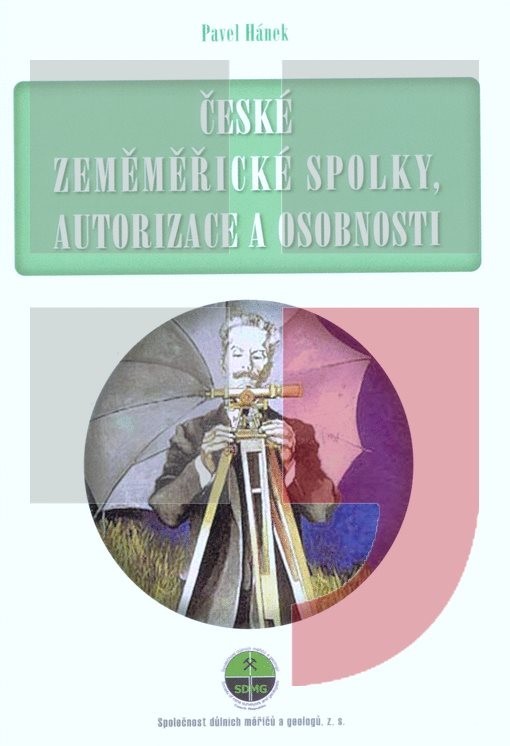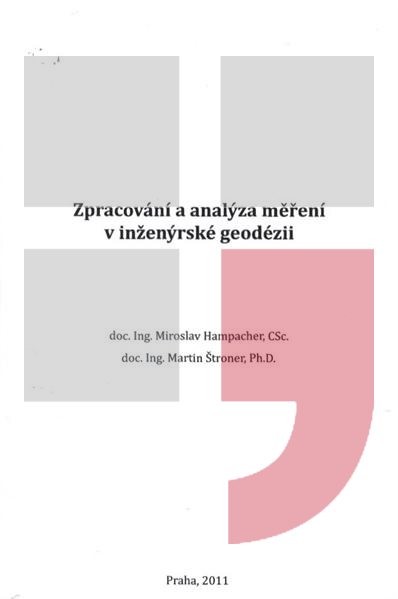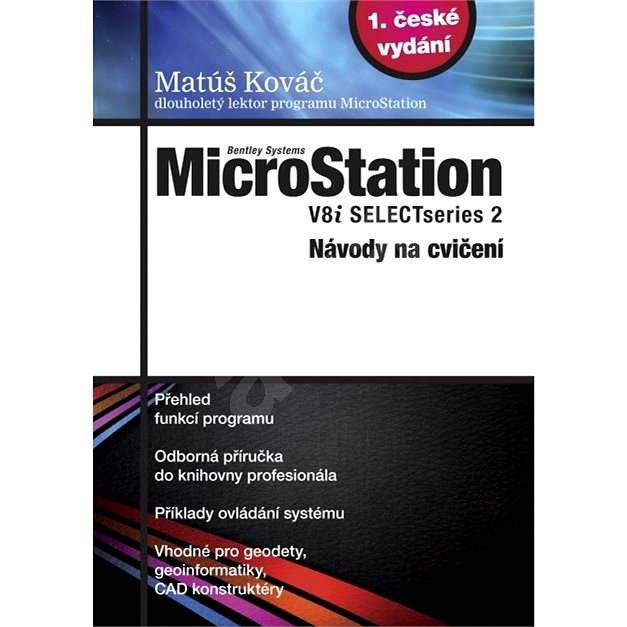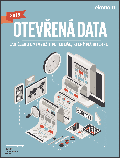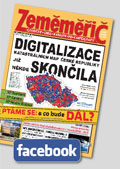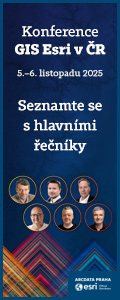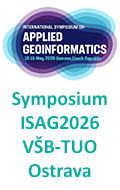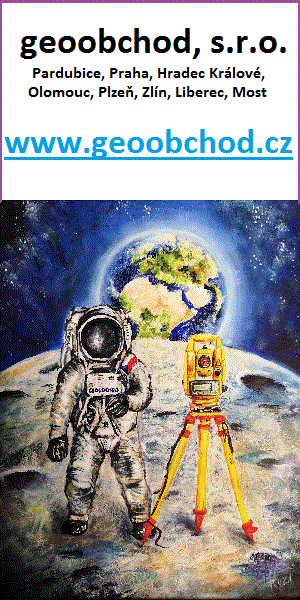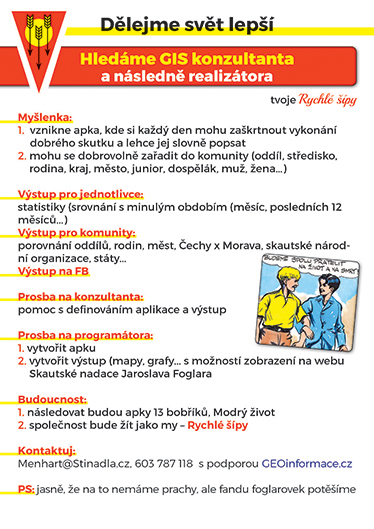zprávy
zdroje zpráv:Georeal hledá informatika s geo přesahem
19.4.2016 9:52 Blogující geomatici - FAV ZČU Protože již několik let naše předměty zaměřené na GIS navštěvují i studenti informačních systémů, začínají se mne lidé z oboru ptát, zda nemáme nějakého programátora s geo přesahem. Momentálně shání takového člověka plzeňská firma Georeal. Požadují následující dovednosti:Co leží za obzorem?
19.4.2016 8:16 GISportal.cz Přemýšleli jste někdy, co leží za obzorem? Napadlo Vás, co byste viděli z pobřeží třeba Francie, kdybyste mohli zahlédnout za lom horizontu? Podobnou otázku si položil i kartograf Andy Woodruff a vytvořil zajímavou vizualizaci toho, co ...Mimořádná nabídka studijních pobytů v Bosně a Hercegovině ve školním roce 2016/17
19.4.2016 7:20 Katedra geografie UP Olomouc Pro školní rok 2016/17 naše katedra získala pro studenty mimořádnou možnost studijních pobytů na univerzitách v Sarajevu a v Mostaru. Studenti studují za podobných podmínek jako u programu ERASMUS+, finanční zabezpečení stáže je mimořádně výhodné.Nabízejí se tyto mobility: Univerzita v Sarajevu: 2 studenti po 5 měsících, Univerzita v Mostaru: 2 studenti po 5 měsících.
Studijní pobyty je možné uskutečnit v zimním nebo letním semestru 2016/17.
Přihlášky ve formátu Erasmus+ odevzdejte do 29.4. dr. Ptáčkovi. Ten poskytne také informace zájemcům. Přihláška je k stažení na: http://geography.upol.cz/erasmus
Pěší síť
19.4.2016 2:00 Cenia - Katalog metadat ČR - INSPIRE Zobrazuje pěší síť v členění na chodníky, pasáže, nezpevněné cesty a nábližky, silnice bez chodníku a mimoúrovně. Data této služby mohou být použita i pro síťové analýzy.INSPIRE téma Parcely (CP)
19.4.2016 2:00 Cenia - Katalog metadat ČR - INSPIRE Data odpovídají směrnici INSPIRE pro téma katastrální parcely (CP). Vychází z katastrální mapy, která je závazným státním mapovým dílem velkého měřítka, obsahuje body polohového bodového pole, polohopis a popis a může mít formu digitální mapy, analogové mapy nebo digitalizované mapy. Data publikovaná v rámci INSPIRE obsahují pouze katastrální území (pro celou Českou Republiku) a parcely a jejich hranice z území, kde je digitální mapa (k 18. 04. 2016 je to 82,80% území České republiky, t.j. 65 302,41km2). Více katastrální zákon 256/2013 Sb., katastrální vyhláška č.357/2013 Sb. v platném znění a INSPIRE Data Specification on Cadastral Parcels v 3.0.1.INSPIRE téma Budovy (BU)
19.4.2016 2:00 Cenia - Katalog metadat ČR - INSPIRE Data odpovídají směrnici INSPIRE pro téma budovy (BU). Data pochází částečně z projektu RÚIAN (Registr územní identifikace, adres a nemovitostí), který je součástí základních registrů České Republiky a obsahuje informace o územní identifikaci, adresách a nemovitostech, a částečně z ISKN (Informační systém katastru nemovistostí). Zdrojem informací o budovách v ISKN je objekt Stavba, v RÚIAN je to Stavební objekt. Většina Staveb je zároveň Stavebními objekty, ale jsou případy, kdy tomu tak není. Kromě Budov datová sada obsahuje i části budov, které jsou pro potřeby INSPIRE vyjádřeny vchody z RÚIAN. Vchody obsahují informace o počtu podlaží, technickoekonomických atributech apod. Datová sada pokrývá celé území české republiky. V datové sadě není uvedeno 2,24%, t.j. 93919 budov (k 18. 04. 2016), protože neobsahují definiční bod ani polygon. Více v zákoně č. 111/2009 Sb., o základních registrech, ve vyhlášce č. 359/2011 Sb., o základním registru územní identifikace, adres a nemovitostí v platných zněních, v zákoně 256/2013 Sb., o katastru nemovitostí, v katastrální vyhlášce č. 357/2013 Sb. v platném znění a INSPIRE Data Specification on Buildings v 3.0 z 13.12.2013.CENIA/cenia_riparian_zones
19.4.2016 2:00 Cenia - Katalog metadat ČR - INSPIRE Riparian Zones (Břehové zóny) jsou součástí služby Copernicus pro monitorování území. Obsahuje podrobné informace o využití území v okolí vodních toků a zmapovaných zelených lineárních prvků (Green Linear Elements) ve 39 evropských státech. Jedná se o vektorová data v měřítku cca 1 : 10 000, aktuálně dostupná za období 2010 - 2013. Technické specifikace jsou k dispozici na http://land.copernicus.eu/user-corner/technical-library, obecné informace na http://land.copernicus.eu.Zóny města - parkovací stání
19.4.2016 2:00 Cenia - Katalog metadat ČR - INSPIRE Mapa zón města pro účely stanovení počtu parkovacích stání (dle Pražských stavebních předpisů)INSPIRE téma Adresy (AD)
19.4.2016 2:00 Cenia - Katalog metadat ČR - INSPIRE Data odpovídají směrnici INSPIRE pro téma adresy (AD). Vychází především z projektu RÚIAN (Registr územní identifikace, adres a nemovitostí), který je součástí základních registrů České Republiky a obsahuje informace o územní identifikaci, adresách a nemovitostech. Data publikovaná v rámci INSPIRE obsahují pouze adresní místa a jejich komponenty, kterými jsou stát, obec, část obce, městský obvod v Praze (MOP), městký obvod/městská část (MO/MČ), ulice a pošta a to na území celé České Republiky. Obsahují rozvněž geometrii, která určuje definiční bod adresního místa. V datové sadě nění uvedeno 2,83%, t.j. 82049 adresních míst (k 18. 04. 2016), protože neobsahují definiční bod, podle kterého by je bylo možné prostorově určit. Více v zákoně č. 111/2009 Sb., o základních registrech a ve vyhlášce č. 359/2011 Sb., o základním registru územní identifikace, adres a nemovitostí v platných zněních a INSPIRE Data Specification on Addresses v 3.0.1 z 26.4.2010.Cyklistická mapa
19.4.2016 2:00 Cenia - Katalog metadat ČR - INSPIRE Aktuální stav cyklodopravy v hl. m. Praze. Obsahuje cyklotrasy značené (včetně popisů), doporučené, nebezpečná místa, stojany a jednosměrky.Reality capture enables smarter coastal mapping for the City of Onkaparinga
18.4.2016 21:18 Bentley SystemsPress Coverage
AEOL
Read the articleQGIS nebo ArcGIS?
18.4.2016 16:17 Blogující geomatici - FAV ZČU Velké porovnání QGISu s ArcGISem je na serveru gisgeography.com, upoutávka visí i na GISPortálu. A těch 27 rozdílů stojí za projití!Earth from Space
18.4.2016 15:50 ESA Observing the Earth
Join us Tuesday, 19 April, at 14:00 CEST as ESA’s Sentinel-1 Mission Manager Pierre Potin joins the show to discuss the radar vision mission for Copernicus
Earth from Space
18.4.2016 15:50 ESA Observing the Earth
ESA’s Sentinel-1 Mission Manager Pierre Potin joins the show to discuss the radar vision mission for Copernicus
Open Source nebo komerce v GIS, posoudí už to někdo pořádně?
18.4.2016 15:48 GISportal.cz Záměrně vyhroceným nadpisem si dovolím upoutat čtenářovu pozornost na poměrně detailní srovnání dvou velmi rozšířených GIS: ArcGIS a QGIS, na které jsem narazil na webu gisgeography.com, když jsem hledal open source alternativu pro ArcScene. Článek se ...GirlsDay 2016 – ESA pokračuje v boření stereotypů
18.4.2016 15:27 Český Kosmický PortálUž od roku 2006 nabízí mezinárodní akce koordinovaná v Nizozemí organizací VHTO mladým dívkám možnost „ochutnat“, o čem jsou vlastně špičkové technologie. Akce, jejímž vyvrcholením je speciální „Dívčí den“ (Girlsday), proběhla ve čtvrtek 14. dubna. Skupinky dívek ve věku 14 a 15 let se podílely na zábavných aktivitách, které jim umožnily více se přiblížit špičkovým technologiím a ICT.
GirlsDay 2016 – ESA pokračuje v boření stereotypů
18.4.2016 15:27 Český Kosmický PortálUž od roku 2006 nabízí mezinárodní akce koordinovaná v Nizozemí organizací VHTO mladým dívkám možnost „ochutnat“, o čem jsou vlastně špičkové technologie. Akce, jejímž vyvrcholením je speciální „Dívčí den“ (Girlsday), proběhla ve čtvrtek 14. dubna. Skupinky dívek ve věku 14 a 15 let se podílely na zábavných aktivitách, které jim umožnily více se přiblížit špičkovým technologiím a ICT.
Copernicus Masters 2016 – realizujte svůj nápad na využití družicových dat!
18.4.2016 14:02 Český Kosmický PortálCopernicus Masters (dříve známé jako GMES Masters) je mezinárodní soutěž pořádaná z iniciativy Evropské kosmické agentury (ESA), Evropské komise, Německé kosmické agentury (DLR) a dalších zainteresovaných partnerů. Cílem soutěže je podpořit rozvoj komerčních služeb a tržně orientovaných aplikací v rámci evropského programu na pozorování Země Copernicus. Vítězové soutěže jsou motivováni finančními odměnami (v celkové ceně 300 000 EUR) a technickou podporou pro realizaci projektu. Výhra také otevírá možností k zařazení vítězného nápadu do podnikatelských inkubačních center.
Sentinel-1 sees rice paddy drop in the Mekong Delta
18.4.2016 14:00 ESA Observing the Earth
Europe’s Sentinel-1A satellite has shown that the Mekong River Delta – one of the world’s major rice-growing areas – saw a significant drop in productivity over the past year, illustrating the effect of El Niño on food security.
Earth? An app for that
18.4.2016 13:08 ESA Observing the Earth
Access imagery from ESA's Earth-watching Proba-V minisatellite with a new app available from Google Play and the Apple App store
I letos jsme sázeli stromy
18.4.2016 12:26Tak jako na podzim i nyní v sobotu 16.4.2016 jsme se připojili k iniciativě firmy Kentico “Trees for bugs”. Sebrali jsme se a vyrazili do Sebranic, kde jsme vysázeli švestku za každý bug v našich aplikacích, který nám za poslední půl rok naši uživatelé nahlásili.

Na fotografii jsme celá skupina. Dělá nám velkou radost, že počet sázejících vývojářů se od minule zdvojnásobil. Tentokráte sázeli 2.

Standa Madron zavzpomínal na geodetické zlaté časy. Bez jeho zkušeností bychom to určitě nezvládli.

Tady by se mohlo někomu zdát, že je tvrdá práce hraná. Rádi bychom to pro tyto pochybovače uvedli na pravou míru - nezdá!

Titul sazeč dne získal jednoznačně Vráťa Kučera se svou malou pomocnicí.

….a je skoro hotovo.
V sekci Zásady územního rozvoj
18.4.2016 12:00 Jihočeský kraj V sekci Zásady územního rozvoje - 4. aktualizace ZÚR Jihočeského kraje (http://geoportal.kraj-jihocesky.gov.cz/gs/4-aktualizace-zur/) je zveřejněn návrhV datech územně analytických p
18.4.2016 12:00 Plzeňský kraj V datech územně analytických podkladů Plzeňského kraje byla provedena aktualizace dat technické infrastruktury od poskytovatele ČEZ Distribuce, a. s. a ČEZ ICT Services, a. s. Data jsou s platností k 7. 4. 2016.V sekci Zásady územního rozvoj
18.4.2016 12:00 Jihočeský kraj V sekci Zásady územního rozvoje - 4. aktualizace ZÚR Jihočeského kraje je zveřejněn návrh Zprávy o uplatňování Zásad územního rozvoje Jihočeského kraje za uplynulé období.V části Digitální technická ma
18.4.2016 12:00 Plzeňský kraj V části Digitální technická mapa Plzeňského kraje (http://geoportal.plzensky-kraj.cz/gs/digitalni-technicka-mapa/) byl doplněn přehled odkazů na stránky jednotlivých správců inženýrských sítí s možností podání žádostí o Vyjádření o existenci sítí (http://geoportal.plzensky-kraj.cz/gs/vyjadreni-o-existenci-siti).V datech územně analytických p
18.4.2016 12:00 Plzeňský kraj V datech územně analytických podkladů Plzeňského kraje byla provedena aktualizace dat technické infrastruktury od poskytovatele ČEZ Distribuce, a. s. (http://geoportal.plzensky-kraj.cz/gs/rss?url=http%3A%2F%2Fgeoportal.plzensky-kraj.cz%2Ftw%2Fost%2Fgp%2Fuap%2Fposkytovatele%2Findex.php%3Fframe%26ID%3D19) a ČEZ ICT Services, a. s. (http://geoportal.plzensky-kraj.cz/gs/rss?url=http%3A%2F%2Fgeoportal.plzensky-kraj.cz%2Ftw%2Fost%2Fgp%2Fuap%2Fposkytovatele%2Findex.php%3Fframe%26ID%3D75) Data jsou s platností k 7. 4. 2016.V části Digitální technická ma
18.4.2016 12:00 Plzeňský kraj V části Digitální technická mapa Plzeňského kraje byl doplněn přehled odkazů na stránky jednotlivých správců inženýrských sítí s možností podání žádostí o Vyjádření o existenci sítí.Ředitel Katastrálního pracoviště Hradec Králové
18.4.2016 11:36 ČÚZK /Urady/Katastralni-urady/Katastralni-urady/Katastralni-urad-pro-Kralovehradecky-kraj/Uredni-deska/Oznameni-a-jina-uredni-sdeleni/Volna-mista/Reditel-Katastralniho-pracoviste-Hradec-KraloveŘeditel Katastrálního pracoviště Hradec Králové
18.4.2016 11:36 ČÚZK - volná místa /Urady/Katastralni-urady/Katastralni-urady/Katastralni-urad-pro-Kralovehradecky-kraj/Uredni-deska/Oznameni-a-jina-uredni-sdeleni/Volna-mista/Reditel-Katastralniho-pracoviste-Hradec-KraloveŘeditel Katastrálního pracoviště Hradec Králové
18.4.2016 11:36 ČÚZK - předpisy a opatření /Urady/Katastralni-urady/Katastralni-urady/Katastralni-urad-pro-Kralovehradecky-kraj/Uredni-deska/Oznameni-a-jina-uredni-sdeleni/Volna-mista/Reditel-Katastralniho-pracoviste-Hradec-KraloveAssuring authentication for all
18.4.2016 10:44 European GNSS AgencyWhen it comes to GNSS, authentication is one of the most important topics. At the 13th Munich Satellite Navigation Summit, the European GNSS Agency (GSA) discussed authentication within the framework of Galileo.
GNSS applications are vulnerable to both voluntary and involuntary interferences,  meaning that providing at least some level of authentication is a complex task. To address this important topic, the European GNSS Agency (GSA) recently participated in a dedicated session on GNSS authentication services – and in particular Galileo’s authentication capabilities – as part of the Munich Satellite Navigation Summit.
meaning that providing at least some level of authentication is a complex task. To address this important topic, the European GNSS Agency (GSA) recently participated in a dedicated session on GNSS authentication services – and in particular Galileo’s authentication capabilities – as part of the Munich Satellite Navigation Summit.
GSA Market Development Officer Reinhard Blasi discussed the different levels of authentication in Galileo’s Open, Commercial and PRS services – all of which will soon be available. In particular he stressed the authentication capabilities of the Galileo Open Service and Commercial Service, a unique feature that only the Galileo constellation can provide. “These are complementary services catering to differentiated market with specific needs for certain level of authentication,” he said. “Based on a recent consultation with industry, we know that authentication is a feature they are willing to implement and the GSA is supporting its implementation in order to add value to the various value chains and markets.”
An example of this support is the GSA’s Fundamental Elements programme, a new research and development funding mechanism supporting the development of chipsets and receivers. The programme will run through 2020 and has a projected budget of EUR 100 million. The main objective of the initiative is to facilitate the development of such fundamental elements as Galileo-enabled chipsets and receivers. Already several projects covering authentication have received funding, including a safety critical European GNSS engine, liability critical European GNSS engine, Commercial Service user terminal, Open Service authentication user terminals and a timing receiver for critical infrastructure.
Major benefits to users
According to the Directorate-General for Internal Market, Industry, Entrepreneurship and SMEs (DG Growth) Project Officer, Service Provision and Exploitation Ignacio Fernandez Hernandez, 6% of EU gross domestic product (GDP) – worth EUR 80 billion – relies on satellite navigation. Hence, an increased reliability and trustworthiness of position and timing information is critical.
“The proposed Galileo authenticated services will provide major benefits to users at a very low additional cost to the programme,” he said. Galileo will start to transmit the Open Service Navigation Message Authentication (NMA) as of 2018, and it will be included in the full operational capability in 2020. “NMA capability can be added to receivers with low impact and no reduction in performance,” added Hernandez. “So authentication can be a reality, providing a service that is useful and helps protect the global GNSS village.”
The Galileo Commercial Service recently underwent the first authentication test of the Galileo E6 signal, which demonstrated low levels of error. The next step is a full demonstration using simulated testing environments at the European Commission’s Joint Research Centre (JRC). Once a robust Signal in Space is available, real environment testing will take place to characterise performance in both adversarial and non-adversarial conditions.
Update from the US
On the US side of the equation no civil signal authentication is currently available via GPS and, according to Director of the US National Coordination Office for Space-Based Positioning, Navigation and Timing Harold Martin, there are no plans to change this in the next generation GPSIII. Martin did note, however, that the US remains interested in EU developments in this area and continues to explore possibilities for future authentication, possibly via a WAAS data channel.
Media note: This feature can be republished without charge provided the European GNSS Agency (GSA) is acknowledged as the source at the top or the bottom of the story. You must request permission before you use any of the photographs on the site. If you republish, we would be grateful if you could link back to the GSA website (http://www.gsa.europa.eu).

Assuring authentication for all
18.4.2016 10:44 European GNSS AgencyWhen it comes to GNSS, authentication is one of the most important topics. At the 13th Munich Satellite Navigation Summit, the European GNSS Agency (GSA) discussed authentication within the framework of Galileo.
GNSS applications are vulnerable to both voluntary and involuntary interferences,  meaning that providing at least some level of authentication is a complex task. To address this important topic, the European GNSS Agency (GSA) recently participated in a dedicated session on GNSS authentication services – and in particular Galileo’s authentication capabilities – as part of the Munich Satellite Navigation Summit.
meaning that providing at least some level of authentication is a complex task. To address this important topic, the European GNSS Agency (GSA) recently participated in a dedicated session on GNSS authentication services – and in particular Galileo’s authentication capabilities – as part of the Munich Satellite Navigation Summit.
GSA Market Development Officer Reinhard Blasi discussed the different levels of authentication in Galileo’s Open, Commercial and PRS services – all of which will soon be available. In particular he stressed the authentication capabilities of the Galileo Open Service and Commercial Service, a unique feature that only the Galileo constellation can provide. “These are complementary services catering to differentiated market with specific needs for certain level of authentication,” he said. “Based on a recent consultation with industry, we know that authentication is a feature they are willing to implement and the GSA is supporting its implementation in order to add value to the various value chains and markets.”
An example of this support is the GSA’s Fundamental Elements programme, a new research and development funding mechanism supporting the development of chipsets and receivers. The programme will run through 2020 and has a projected budget of EUR 100 million. The main objective of the initiative is to facilitate the development of such fundamental elements as Galileo-enabled chipsets and receivers. Already several projects covering authentication have received funding, including a safety critical European GNSS engine, liability critical European GNSS engine, Commercial Service user terminal, Open Service authentication user terminals and a timing receiver for critical infrastructure.
Major benefits to users
According to the Directorate-General for Internal Market, Industry, Entrepreneurship and SMEs (DG Growth) Project Officer, Service Provision and Exploitation Ignacio Fernandez Hernandez, 6% of EU gross domestic product (GDP) – worth EUR 80 billion – relies on satellite navigation. Hence, an increased reliability and trustworthiness of position and timing information is critical.
“The proposed Galileo authenticated services will provide major benefits to users at a very low additional cost to the programme,” he said. Galileo will start to transmit the Open Service Navigation Message Authentication (NMA) as of 2018, and it will be included in the full operational capability in 2020. “NMA capability can be added to receivers with low impact and no reduction in performance,” added Hernandez. “So authentication can be a reality, providing a service that is useful and helps protect the global GNSS village.”
The Galileo Commercial Service recently underwent the first authentication test of the Galileo E6 signal, which demonstrated low levels of error. The next step is a full demonstration using simulated testing environments at the European Commission’s Joint Research Centre (JRC). Once a robust Signal in Space is available, real environment testing will take place to characterise performance in both adversarial and non-adversarial conditions.
Update from the US
On the US side of the equation no civil signal authentication is currently available via GPS and, according to Director of the US National Coordination Office for Space-Based Positioning, Navigation and Timing Harold Martin, there are no plans to change this in the next generation GPSIII. Martin did note, however, that the US remains interested in EU developments in this area and continues to explore possibilities for future authentication, possibly via a WAAS data channel.
Media note: This feature can be republished without charge provided the European GNSS Agency (GSA) is acknowledged as the source at the top or the bottom of the story. You must request permission before you use any of the photographs on the site. If you republish, we would be grateful if you could link back to the GSA website (http://www.gsa.europa.eu).

Assuring authentication for all
18.4.2016 10:44 European GNSS AgencyWhen it comes to GNSS, authentication is one of the most important topics. At the 13th Munich Satellite Navigation Summit, the European GNSS Agency (GSA) discussed authentication within the framework of Galileo.
GNSS applications are vulnerable to both voluntary and involuntary interferences,  meaning that providing at least some level of authentication is a complex task. To address this important topic, the European GNSS Agency (GSA) recently participated in a dedicated session on GNSS authentication services – and in particular Galileo’s authentication capabilities – as part of the Munich Satellite Navigation Summit.
meaning that providing at least some level of authentication is a complex task. To address this important topic, the European GNSS Agency (GSA) recently participated in a dedicated session on GNSS authentication services – and in particular Galileo’s authentication capabilities – as part of the Munich Satellite Navigation Summit.
GSA Market Development Officer Reinhard Blasi discussed the different levels of authentication in Galileo’s Open, Commercial and PRS services – all of which will soon be available. In particular he stressed the authentication capabilities of the Galileo Open Service and Commercial Service, a unique feature that only the Galileo constellation can provide. “These are complementary services catering to differentiated market with specific needs for certain level of authentication,” he said. “Based on a recent consultation with industry, we know that authentication is a feature they are willing to implement and the GSA is supporting its implementation in order to add value to the various value chains and markets.”
An example of this support is the GSA’s Fundamental Elements programme, a new research and development funding mechanism supporting the development of chipsets and receivers. The programme will run through 2020 and has a projected budget of EUR 100 million. The main objective of the initiative is to facilitate the development of such fundamental elements as Galileo-enabled chipsets and receivers. Already several projects covering authentication have received funding, including a safety critical European GNSS engine, liability critical European GNSS engine, Commercial Service user terminal, Open Service authentication user terminals and a timing receiver for critical infrastructure.
Major benefits to users
According to the Directorate-General for Internal Market, Industry, Entrepreneurship and SMEs (DG Growth) Project Officer, Service Provision and Exploitation Ignacio Fernandez Hernandez, 6% of EU gross domestic product (GDP) – worth EUR 80 billion – relies on satellite navigation. Hence, an increased reliability and trustworthiness of position and timing information is critical.
“The proposed Galileo authenticated services will provide major benefits to users at a very low additional cost to the programme,” he said. Galileo will start to transmit the Open Service Navigation Message Authentication (NMA) as of 2018, and it will be included in the full operational capability in 2020. “NMA capability can be added to receivers with low impact and no reduction in performance,” added Hernandez. “So authentication can be a reality, providing a service that is useful and helps protect the global GNSS village.”
The Galileo Commercial Service recently underwent the first authentication test of the Galileo E6 signal, which demonstrated low levels of error. The next step is a full demonstration using simulated testing environments at the European Commission’s Joint Research Centre (JRC). Once a robust Signal in Space is available, real environment testing will take place to characterise performance in both adversarial and non-adversarial conditions.
Update from the US
On the US side of the equation no civil signal authentication is currently available via GPS and, according to Director of the US National Coordination Office for Space-Based Positioning, Navigation and Timing Harold Martin, there are no plans to change this in the next generation GPSIII. Martin did note, however, that the US remains interested in EU developments in this area and continues to explore possibilities for future authentication, possibly via a WAAS data channel.
Media note: This feature can be republished without charge provided the European GNSS Agency (GSA) is acknowledged as the source at the top or the bottom of the story. You must request permission before you use any of the photographs on the site. If you republish, we would be grateful if you could link back to the GSA website (http://www.gsa.europa.eu).

GIS v přístavu, drony a návštěvníci Machu Picchu
18.4.2016 10:15 ARCDATAPojďte si přečíst o netradičních způsobech využití GIS, jako je například řízení návštěvníků slavné archeologické lokality Machu Picchu, využití 3D analýz v Nizozemí v souvislosti se záplavami či kombinace GIS a UAV při hledání pohřešovaných obyvatel při povodni. Inspirovat se můžete navíc i návody k aplikacím ArcGIS. Připravili jsme pro vás totiž výběr zajímavých článků z aktuálních vydání časopisů ArcNews, ArcUser a newsletteru ArcWatch.
Přehled těchto článků naleznete na samostatné stránce.
GEODÉZIE VE STAVEBNICTVÍ A PRŮMYSLU
18.4.2016 9:30 Zeměměřič Konference se koná 21. 4. 2016 (čtvrtek) v Brně,Kongresové centrum na Výstaviti od 9:30 do 16:00 hod.Vedoucí oddělení právních vztahů k nemovitostem na Katastrálním pracovišti Rumburk na Katastrálním ú
18.4.2016 8:59 ČÚZK - předpisy a opatření /Urady/Katastralni-urady/Katastralni-urady/Katastralni-urad-pro-Ustecky-kraj/Uredni-deska/Oznameni-a-jina-uredni-sdeleni/Volna-mista/Vedouci-oddeleni-pravnich-vztahu-k-nemovitoste-(2)Vedoucí oddělení právních vztahů k nemovitostem na Katastrálním pracovišti Rumburk na Katastrálním ú
18.4.2016 8:59 ČÚZK - volná místa /Urady/Katastralni-urady/Katastralni-urady/Katastralni-urad-pro-Ustecky-kraj/Uredni-deska/Oznameni-a-jina-uredni-sdeleni/Volna-mista/Vedouci-oddeleni-pravnich-vztahu-k-nemovitoste-(2)Vedoucí oddělení právních vztahů k nemovitostem na Katastrálním pracovišti Rumburk na Katastrálním ú
18.4.2016 8:59 ČÚZK /Urady/Katastralni-urady/Katastralni-urady/Katastralni-urad-pro-Ustecky-kraj/Uredni-deska/Oznameni-a-jina-uredni-sdeleni/Volna-mista/Vedouci-oddeleni-pravnich-vztahu-k-nemovitoste-(2)Vedoucí oddělení aktualizace a dokumentace katastru nemovitostí na Katastrálním pracovišti Rumburk n
18.4.2016 8:57 ČÚZK - volná místa /Urady/Katastralni-urady/Katastralni-urady/Katastralni-urad-pro-Ustecky-kraj/Uredni-deska/Oznameni-a-jina-uredni-sdeleni/Volna-mista/Vedouci-oddeleni-aktualizace-a-dokumentace-kat-(1)Vedoucí oddělení aktualizace a dokumentace katastru nemovitostí na Katastrálním pracovišti Rumburk n
18.4.2016 8:57 ČÚZK /Urady/Katastralni-urady/Katastralni-urady/Katastralni-urad-pro-Ustecky-kraj/Uredni-deska/Oznameni-a-jina-uredni-sdeleni/Volna-mista/Vedouci-oddeleni-aktualizace-a-dokumentace-kat-(1)Vedoucí oddělení aktualizace a dokumentace katastru nemovitostí na Katastrálním pracovišti Rumburk n
18.4.2016 8:57 ČÚZK - předpisy a opatření /Urady/Katastralni-urady/Katastralni-urady/Katastralni-urad-pro-Ustecky-kraj/Uredni-deska/Oznameni-a-jina-uredni-sdeleni/Volna-mista/Vedouci-oddeleni-aktualizace-a-dokumentace-kat-(1)Vedoucí oddělení právních vztahů k nemovitostem na Katastrálním pracovišti Děčín na Katastrálním úřa
18.4.2016 8:55 ČÚZK - předpisy a opatření /Urady/Katastralni-urady/Katastralni-urady/Katastralni-urad-pro-Ustecky-kraj/Uredni-deska/Oznameni-a-jina-uredni-sdeleni/Volna-mista/Vedouci-oddeleni-pravnich-vztahu-k-nemovitoste-(1)Vedoucí oddělení právních vztahů k nemovitostem na Katastrálním pracovišti Děčín na Katastrálním úřa
18.4.2016 8:55 ČÚZK - volná místa /Urady/Katastralni-urady/Katastralni-urady/Katastralni-urad-pro-Ustecky-kraj/Uredni-deska/Oznameni-a-jina-uredni-sdeleni/Volna-mista/Vedouci-oddeleni-pravnich-vztahu-k-nemovitoste-(1)Vedoucí oddělení právních vztahů k nemovitostem na Katastrálním pracovišti Děčín na Katastrálním úřa
18.4.2016 8:55 ČÚZK /Urady/Katastralni-urady/Katastralni-urady/Katastralni-urad-pro-Ustecky-kraj/Uredni-deska/Oznameni-a-jina-uredni-sdeleni/Volna-mista/Vedouci-oddeleni-pravnich-vztahu-k-nemovitoste-(1)Vedoucí oddělení aktualizace a dokumentace katastru nemovitostí na Katastrálním pracovišti Děčín na
18.4.2016 8:53 ČÚZK /Urady/Katastralni-urady/Katastralni-urady/Katastralni-urad-pro-Ustecky-kraj/Uredni-deska/Oznameni-a-jina-uredni-sdeleni/Volna-mista/Vedouci-oddeleni-aktualizace-a-dokumentace-katastrVedoucí oddělení aktualizace a dokumentace katastru nemovitostí na Katastrálním pracovišti Děčín na
18.4.2016 8:53 ČÚZK - volná místa /Urady/Katastralni-urady/Katastralni-urady/Katastralni-urad-pro-Ustecky-kraj/Uredni-deska/Oznameni-a-jina-uredni-sdeleni/Volna-mista/Vedouci-oddeleni-aktualizace-a-dokumentace-katastrVedoucí oddělení aktualizace a dokumentace katastru nemovitostí na Katastrálním pracovišti Děčín na
18.4.2016 8:53 ČÚZK - předpisy a opatření /Urady/Katastralni-urady/Katastralni-urady/Katastralni-urad-pro-Ustecky-kraj/Uredni-deska/Oznameni-a-jina-uredni-sdeleni/Volna-mista/Vedouci-oddeleni-aktualizace-a-dokumentace-katastrVedoucí oddělení aktualizace katastru nemovitostí na Katastrálním pracovišti Litoměřice na Katastrál
18.4.2016 8:38 ČÚZK - volná místa /Urady/Katastralni-urady/Katastralni-urady/Katastralni-urad-pro-Ustecky-kraj/Uredni-deska/Oznameni-a-jina-uredni-sdeleni/Volna-mista/Vedouci-oddeleni-aktualizace-katastru-nemovitostiVedoucí oddělení aktualizace katastru nemovitostí na Katastrálním pracovišti Litoměřice na Katastrál
18.4.2016 8:38 ČÚZK - předpisy a opatření /Urady/Katastralni-urady/Katastralni-urady/Katastralni-urad-pro-Ustecky-kraj/Uredni-deska/Oznameni-a-jina-uredni-sdeleni/Volna-mista/Vedouci-oddeleni-aktualizace-katastru-nemovitostiVedoucí oddělení aktualizace katastru nemovitostí na Katastrálním pracovišti Litoměřice na Katastrál
18.4.2016 8:38 ČÚZK /Urady/Katastralni-urady/Katastralni-urady/Katastralni-urad-pro-Ustecky-kraj/Uredni-deska/Oznameni-a-jina-uredni-sdeleni/Volna-mista/Vedouci-oddeleni-aktualizace-katastru-nemovitostiVedoucí oddělení právních vztahů k nemovitostem na Katastrálním pracovišti Litoměřice na Katastrální
18.4.2016 8:27 ČÚZK /Urady/Katastralni-urady/Katastralni-urady/Katastralni-urad-pro-Ustecky-kraj/Uredni-deska/Oznameni-a-jina-uredni-sdeleni/Volna-mista/Vedouci-oddeleni-pravnich-vztahu-k-nemovitostem-naVedoucí oddělení právních vztahů k nemovitostem na Katastrálním pracovišti Litoměřice na Katastrální
18.4.2016 8:27 ČÚZK - předpisy a opatření /Urady/Katastralni-urady/Katastralni-urady/Katastralni-urad-pro-Ustecky-kraj/Uredni-deska/Oznameni-a-jina-uredni-sdeleni/Volna-mista/Vedouci-oddeleni-pravnich-vztahu-k-nemovitostem-naVedoucí oddělení právních vztahů k nemovitostem na Katastrálním pracovišti Litoměřice na Katastrální
18.4.2016 8:27 ČÚZK - volná místa /Urady/Katastralni-urady/Katastralni-urady/Katastralni-urad-pro-Ustecky-kraj/Uredni-deska/Oznameni-a-jina-uredni-sdeleni/Volna-mista/Vedouci-oddeleni-pravnich-vztahu-k-nemovitostem-naVedoucí oddělení dokumentace katastru nemovitostí na Katastrálním pracovišti Litoměřice na Katastrál
18.4.2016 8:10 ČÚZK - předpisy a opatření /Urady/Katastralni-urady/Katastralni-urady/Katastralni-urad-pro-Ustecky-kraj/Uredni-deska/Oznameni-a-jina-uredni-sdeleni/Volna-mista/Vedouci-oddeleni-dokumentace-katastru-nemovitostiVedoucí oddělení dokumentace katastru nemovitostí na Katastrálním pracovišti Litoměřice na Katastrál
18.4.2016 8:10 ČÚZK - volná místa /Urady/Katastralni-urady/Katastralni-urady/Katastralni-urad-pro-Ustecky-kraj/Uredni-deska/Oznameni-a-jina-uredni-sdeleni/Volna-mista/Vedouci-oddeleni-dokumentace-katastru-nemovitostiVedoucí oddělení dokumentace katastru nemovitostí na Katastrálním pracovišti Litoměřice na Katastrál
18.4.2016 8:10 ČÚZK /Urady/Katastralni-urady/Katastralni-urady/Katastralni-urad-pro-Ustecky-kraj/Uredni-deska/Oznameni-a-jina-uredni-sdeleni/Volna-mista/Vedouci-oddeleni-dokumentace-katastru-nemovitostiVyšel náš nástěnný kalendář Česko mezi oblaky pro rok 2017
18.4.2016 7:54 UpVision Dalším naším letošním překvapením je vydání nástěnného kalendáře Česko mezi oblaky na rok 2017 s našimi leteckými fotkami od vydavatelství Helma 365.Kalendář můžete už nyní objednávat zde:
http://eshop.helma365.eu/katalog/zbozi/popis_zbozi.asp?klic_ma=18282.400
Pokus
18.4.2016 7:51 ČÚZK /Uvod/Produkty-a-sluzby/RUIAN/1-Editacni-agendovy-system-ISUI/Editacni-webove-sluzby-ISUI/Archiv-novinek-k-A3S/PokusPokus
18.4.2016 7:51 ČÚZK - předpisy a opatření /Uvod/Produkty-a-sluzby/RUIAN/1-Editacni-agendovy-system-ISUI/Editacni-webove-sluzby-ISUI/Archiv-novinek-k-A3S/PokusVernisáž výstavy Divoká krása Jeseníků 19. 4. 2016
18.4.2016 6:00 Katedra geografie UP Olomouc Zveme Vás na vernisáž výstavy Divoká krása Jeseníků, kterou uvede její autor Ondřej Bačík v úterý 19. dubna 2016 v 18.00 (před přednáškou Cestovatelských úterků) v prostorách před katedrou geografie (pozvánka).Kontaktní body IZS VLS ČR - traumabody
18.4.2016 2:00 Cenia - Katalog metadat ČR - INSPIRE Kontaktní bod pro složky IZS. Kontaktní bod s možností čerpání vody. Územní rozsah dat je za území bývalého vojenského újezdu Brdy.Evidence objektů podle hospodářství
18.4.2016 2:00 Cenia - Katalog metadat ČR - INSPIRE Evidence objektů podle hospodářství evidované na základě zákona č. 252/1997 Sb., o zemědělství. Rozdělují se na trvalé, vodní a ostatní objekty.Riparian Zones (Břehové zóny)
18.4.2016 2:00 Cenia - Katalog metadat ČR - INSPIRE Riparian Zones (Břehové zóny) jsou součástí služby Copernicus pro monitorování území. Obsahuje podrobné informace o využití území v okolí vodních toků a zmapovaných zelených lineárních prvků (Green Linear Elements) ve 39 evropských státech. Jedná se o vektorová data v měřítku cca 1 : 10 000, aktuálně dostupná za období 2010 - 2013. Technické specifikace jsou k dispozici na http://land.copernicus.eu/user-corner/technical-library, obecné informace na http://land.copernicus.eu.PÚ vs. ÚP. Koordinácia namiesto súperenia.
17.4.2016 8:36 Komora pozemkových úprav SRKeďže vzťah medzi pozemkovými úpravami a územným plánovaním môže mať značný význam pre ich ďalšie smerovanie, pripájam niekoľko ďalších postrehov k predchádzajúcemu príspevku.
PÚ vs. ÚP. Koordinácia namiesto súperenia
17.4.2016 8:36 Komora pozemkových úprav SR Keďže vzťah medzi pozemkovými úpravami a územným plánovaním môže mať značný význam pre ich ďalšie smerovanie, pripájam niekoľko ďalších postrehov k predchádzajúcemu príspevku.Explaining the Possibilities of LumenRT with Bentley
16.4.2016 19:24 Bentley SystemsPress Coverage
SPAR Point Group
Read the articleTalking Context Capture Software with Bentley
16.4.2016 19:22 Bentley SystemsPress Coverage
SPAR Point Group
Read the articleThe Wide Range of Bentley Technology Applications
15.4.2016 19:25 Bentley SystemsPress Coverage
SPAR Point Group
Read the articleVedoucí oddělení právních vztahů k nemovitostem Katastrálního pracoviště Uherský Brod
15.4.2016 16:33 ČÚZK - volná místa /Urady/Katastralni-urady/Katastralni-urady/Katastralni-urad-pro-Zlinsky-kraj/Uredni-deska/Oznameni-a-jina-uredni-sdeleni/Volna-mista/Vedouci-oddeleni-pravnich-vztahu-k-nemovitoste-(5)Vedoucí oddělení právních vztahů k nemovitostem Katastrálního pracoviště Uherský Brod
15.4.2016 16:33 ČÚZK - předpisy a opatření /Urady/Katastralni-urady/Katastralni-urady/Katastralni-urad-pro-Zlinsky-kraj/Uredni-deska/Oznameni-a-jina-uredni-sdeleni/Volna-mista/Vedouci-oddeleni-pravnich-vztahu-k-nemovitoste-(5)Vedoucí oddělení právních vztahů k nemovitostem Katastrálního pracoviště Uherský Brod
15.4.2016 16:33 ČÚZK /Urady/Katastralni-urady/Katastralni-urady/Katastralni-urad-pro-Zlinsky-kraj/Uredni-deska/Oznameni-a-jina-uredni-sdeleni/Volna-mista/Vedouci-oddeleni-pravnich-vztahu-k-nemovitoste-(5)Vedoucí oddělení právních vztahů k nemovitostem Katastrálního pracoviště Uherské Hradiště
15.4.2016 16:30 ČÚZK - volná místa /Urady/Katastralni-urady/Katastralni-urady/Katastralni-urad-pro-Zlinsky-kraj/Uredni-deska/Oznameni-a-jina-uredni-sdeleni/Volna-mista/Vedouci-oddeleni-pravnich-vztahu-k-nemovitoste-(4)Vedoucí oddělení právních vztahů k nemovitostem Katastrálního pracoviště Uherské Hradiště
15.4.2016 16:30 ČÚZK /Urady/Katastralni-urady/Katastralni-urady/Katastralni-urad-pro-Zlinsky-kraj/Uredni-deska/Oznameni-a-jina-uredni-sdeleni/Volna-mista/Vedouci-oddeleni-pravnich-vztahu-k-nemovitoste-(4)Vedoucí oddělení právních vztahů k nemovitostem Katastrálního pracoviště Uherské Hradiště
15.4.2016 16:30 ČÚZK - předpisy a opatření /Urady/Katastralni-urady/Katastralni-urady/Katastralni-urad-pro-Zlinsky-kraj/Uredni-deska/Oznameni-a-jina-uredni-sdeleni/Volna-mista/Vedouci-oddeleni-pravnich-vztahu-k-nemovitoste-(4)Vedoucí oddělení právních vztahů k nemovitostem Katastrálního pracoviště Zlín
15.4.2016 16:28 ČÚZK /Urady/Katastralni-urady/Katastralni-urady/Katastralni-urad-pro-Zlinsky-kraj/Uredni-deska/Oznameni-a-jina-uredni-sdeleni/Volna-mista/Vedouci-oddeleni-pravnich-vztahu-k-nemovitoste-(3)Vedoucí oddělení právních vztahů k nemovitostem Katastrálního pracoviště Zlín
15.4.2016 16:28 ČÚZK - volná místa /Urady/Katastralni-urady/Katastralni-urady/Katastralni-urad-pro-Zlinsky-kraj/Uredni-deska/Oznameni-a-jina-uredni-sdeleni/Volna-mista/Vedouci-oddeleni-pravnich-vztahu-k-nemovitoste-(3)Vedoucí oddělení právních vztahů k nemovitostem Katastrálního pracoviště Zlín
15.4.2016 16:28 ČÚZK - předpisy a opatření /Urady/Katastralni-urady/Katastralni-urady/Katastralni-urad-pro-Zlinsky-kraj/Uredni-deska/Oznameni-a-jina-uredni-sdeleni/Volna-mista/Vedouci-oddeleni-pravnich-vztahu-k-nemovitoste-(3)Vedoucí oddělení aktualizace KN Katastrálního pracoviště Uherský Brod
15.4.2016 16:26 ČÚZK - volná místa /Urady/Katastralni-urady/Katastralni-urady/Katastralni-urad-pro-Zlinsky-kraj/Uredni-deska/Oznameni-a-jina-uredni-sdeleni/Volna-mista/Vedouci-oddeleni-aktualizace-KN-Katastralniho-(4)Vedoucí oddělení aktualizace KN Katastrálního pracoviště Uherský Brod
15.4.2016 16:26 ČÚZK - předpisy a opatření /Urady/Katastralni-urady/Katastralni-urady/Katastralni-urad-pro-Zlinsky-kraj/Uredni-deska/Oznameni-a-jina-uredni-sdeleni/Volna-mista/Vedouci-oddeleni-aktualizace-KN-Katastralniho-(4)Vedoucí oddělení aktualizace KN Katastrálního pracoviště Uherský Brod
15.4.2016 16:26 ČÚZK /Urady/Katastralni-urady/Katastralni-urady/Katastralni-urad-pro-Zlinsky-kraj/Uredni-deska/Oznameni-a-jina-uredni-sdeleni/Volna-mista/Vedouci-oddeleni-aktualizace-KN-Katastralniho-(4)Zařízení EDRS-A prochází testováním
15.4.2016 16:20 Český Kosmický PortálPrůkopnické evropské komunikační zařízení EDRS-A (European Data Relay System), které je často označováno jako „evropská kosmická datová dálnice“, je ve vesmíru už měsíc a jeho testování probíhá výborně. Tým v belgickém Redu, který ho má na starosti, ho nyní posunul k plnému provozu poté, co položil základy pro první laserové spojení s družicemi Sentinel systému GMES/Copernicus.
Vedoucí oddělení aktualizace KN Katastrálního pracoviště Uherské Hradiště
15.4.2016 16:19 ČÚZK - předpisy a opatření /Urady/Katastralni-urady/Katastralni-urady/Katastralni-urad-pro-Zlinsky-kraj/Uredni-deska/Oznameni-a-jina-uredni-sdeleni/Volna-mista/Vedouci-oddeleni-aktualizace-KN-Katastralniho-(3)Vedoucí oddělení aktualizace KN Katastrálního pracoviště Uherské Hradiště
15.4.2016 16:19 ČÚZK - volná místa /Urady/Katastralni-urady/Katastralni-urady/Katastralni-urad-pro-Zlinsky-kraj/Uredni-deska/Oznameni-a-jina-uredni-sdeleni/Volna-mista/Vedouci-oddeleni-aktualizace-KN-Katastralniho-(3)Vedoucí oddělení aktualizace KN Katastrálního pracoviště Uherské Hradiště
15.4.2016 16:19 ČÚZK /Urady/Katastralni-urady/Katastralni-urady/Katastralni-urad-pro-Zlinsky-kraj/Uredni-deska/Oznameni-a-jina-uredni-sdeleni/Volna-mista/Vedouci-oddeleni-aktualizace-KN-Katastralniho-(3)Vedoucí oddělení aktualizace KN Katastrálního pracoviště Zlín
15.4.2016 16:16 ČÚZK /Urady/Katastralni-urady/Katastralni-urady/Katastralni-urad-pro-Zlinsky-kraj/Uredni-deska/Oznameni-a-jina-uredni-sdeleni/Volna-mista/Vedouci-oddeleni-aktualizace-KN-Katastralniho-(2)Vedoucí oddělení aktualizace KN Katastrálního pracoviště Zlín
15.4.2016 16:16 ČÚZK - předpisy a opatření /Urady/Katastralni-urady/Katastralni-urady/Katastralni-urad-pro-Zlinsky-kraj/Uredni-deska/Oznameni-a-jina-uredni-sdeleni/Volna-mista/Vedouci-oddeleni-aktualizace-KN-Katastralniho-(2)Vedoucí oddělení aktualizace KN Katastrálního pracoviště Zlín
15.4.2016 16:16 ČÚZK - volná místa /Urady/Katastralni-urady/Katastralni-urady/Katastralni-urad-pro-Zlinsky-kraj/Uredni-deska/Oznameni-a-jina-uredni-sdeleni/Volna-mista/Vedouci-oddeleni-aktualizace-KN-Katastralniho-(2)Fakulta aplikovaných věd Západočeské univerzity v Plzni má novou katedru
15.4.2016 13:35 Zeměměřič Dnem 1. dubna 2016 byla zřízena Katedra geomatiky (KGM) Fakulty aplikovaných věd ZČU, fungující v uplynulých 20 letech jako oddělení geomatiky na Katedře matematiky FAV.XSD-RUIAN-1_8
15.4.2016 13:33 ČÚZK - předpisy a opatření /Uvod/Produkty-a-sluzby/RUIAN/1-Editacni-agendovy-system-ISUI/Editacni-webove-sluzby-ISUI/Editacni-webove-sluzby-ISUI/XSD-RUIAN-1_8vzoryXML
15.4.2016 13:32 ČÚZK - předpisy a opatření /Uvod/Produkty-a-sluzby/RUIAN/1-Editacni-agendovy-system-ISUI/Editacni-webove-sluzby-ISUI/Editacni-webove-sluzby-ISUI/vzoryXMLZadost_o_akceptaci
15.4.2016 13:32 ČÚZK - předpisy a opatření /Uvod/Produkty-a-sluzby/RUIAN/1-Editacni-agendovy-system-ISUI/Editacni-webove-sluzby-ISUI/Editacni-webove-sluzby-ISUI/Zadost_o_akceptaciWebove_sluzby_ISUI
15.4.2016 13:32 ČÚZK - předpisy a opatření /Uvod/Produkty-a-sluzby/RUIAN/1-Editacni-agendovy-system-ISUI/Editacni-webove-sluzby-ISUI/Editacni-webove-sluzby-ISUI/Webove_sluzby_ISUITestovani_-v_SoapUI
15.4.2016 13:31 ČÚZK - předpisy a opatření /Uvod/Produkty-a-sluzby/RUIAN/1-Editacni-agendovy-system-ISUI/Editacni-webove-sluzby-ISUI/Editacni-webove-sluzby-ISUI/Testovani_-v_SoapUIPrehled-pravidel-a-nejcastejsich-chyb-pri-editaci-v-ISUI
15.4.2016 13:30 ČÚZK - předpisy a opatření /Uvod/Produkty-a-sluzby/RUIAN/1-Editacni-agendovy-system-ISUI/Editacni-webove-sluzby-ISUI/Editacni-webove-sluzby-ISUI/Prehled-pravidel-a-nejcastejsich-chyb-pri-editaciPostup_testovani
15.4.2016 13:30 ČÚZK - předpisy a opatření /Uvod/Produkty-a-sluzby/RUIAN/1-Editacni-agendovy-system-ISUI/Editacni-webove-sluzby-ISUI/Editacni-webove-sluzby-ISUI/Postup_testovaniImport_certifikatu_a_vytvoreni_keystore
15.4.2016 13:29 ČÚZK - předpisy a opatření /Uvod/Produkty-a-sluzby/RUIAN/1-Editacni-agendovy-system-ISUI/Editacni-webove-sluzby-ISUI/Editacni-webove-sluzby-ISUI/Import_certifikatu_a_vytvoreni_keystoreZadost_povoleniWS
15.4.2016 13:28 ČÚZK - předpisy a opatření /Uvod/Produkty-a-sluzby/RUIAN/1-Editacni-agendovy-system-ISUI/Editacni-webove-sluzby-ISUI/Editacni-webove-sluzby-ISUI/Formular_povoleniWSZadost_povoleni_pristupu
15.4.2016 13:28 ČÚZK - předpisy a opatření /Uvod/Produkty-a-sluzby/RUIAN/1-Editacni-agendovy-system-ISUI/Editacni-webove-sluzby-ISUI/Editacni-webove-sluzby-ISUI/Formular_povoleniWSFormular_povoleniWS
15.4.2016 13:28 ČÚZK - předpisy a opatření /Uvod/Produkty-a-sluzby/RUIAN/1-Editacni-agendovy-system-ISUI/Editacni-webove-sluzby-ISUI/Editacni-webove-sluzby-ISUI/Formular_povoleniWSČGS – Blok expertů ESUR 20. 4. 2016
15.4.2016 10:50 Katedra geografie UP Olomouc Zveme Vás na přednášku v rámci Bloku expertů ESURHrozba jménem palmový olej
která se uskuteční ve středu 20. dubna 2016 od 15.00 do 16.30 na učebně LP 5007 Přírodovědecké fakulty UP. Přednáší Ing. Zuzana Pohanková a MgA. Barbara Tesařová (pozvánka).
ČGS – Cestovatelský úterek 19. 4. 2016 (Kanada)
15.4.2016 10:49 Katedra geografie UP Olomouc Zveme Vás na přednášku v cyklu Cestovatelské úterkyKanada: Northwest Territories
která se uskuteční v úterý 19. dubna 2016 od 18.30 do 20.00 na učebně LP 2005. Přednáší Jiří Prokop (pozvánka).




